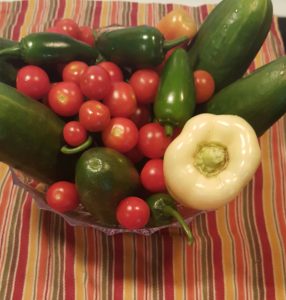Today I’m pleased to publish a guest post on the 8 must-have gardening tools for beginning gardeners. Even though it’s January, and we are in the midst of an Arctic blast, it’s not too early to plan for spring! Shopping for gardening tools in January allows you to pick up some of last year’s inventory at steep clearance prices!
RELATED POST: Growing Your Own Fruits and Vegetables, 3 Crops For Beginner Gardeners
Intro

As a beginner gardener—and you probably are a beginner since you’re reading this article—you should pick your tools carefully. Don’t go overboard and buy a whole set of tools then end up using only one or two of them. Stick to the basics and buy only what you need first. Expand your tools when you’re ready.
Garden Tools You Should Buy
1) Hand Trowel:
No, not a hand towel. Hand trowel. A hand trowel is a hand-sized shovel that allows you to dig around corners to take out weeds from their roots, transplant plants from pot to garden, or plant various herbs.
If your budget is big enough, you can acquire a hand trowel with a stainless steel head that can take all the moisture and dirt it can handle. This will ensure you rust-free longevity and durability that you can trust. Unlike the spade, it’s more of a curved bowl of a shovel that scoops up dirt and earth.
2) Pruning Shears or Loppers:
If you need something in your garden to get lopped or pruned, whether it’s your rosebush or bonsai tree, then you must get your hands on pruning shears or loppers. It can also lop or prune off thin tree branches with the right amount of thickness (about 2 inches in diameter).
These garden scissors are indeed essential tools that belong to any tool shed worth its salt. Lopping off overgrowth is required to keep your garden clean and prevent your bigger plants from hogging all the sun.
3) Gloves:
You should not settle for old bathroom rubber gloves that are about to bust open. You should instead use proper cloth gardening gloves specifically made to deal with the rough grind of gardening. It should protect your delicate hands from splinters and thorns from plants, for example.
The most durable pair of gloves need not be too bulky either. You should keep them protected as well by cleaning them before storage and keeping them away from insects, water, and too much sun to boot.
4) Rake:
Your rake is what you use in order to deal with debris from pruning and dead leaves or foliage. Your sturdy inexpensive plastic rake is enough to whisk the leaves away. However, if you want your rake to last, then you should buy a metal head and wooden handle rake.
This essential tool ensures the cleanliness of your garden. You can also avail of adjustable steel rakes that you can use in a multitude of ways.
5) Spade:
This handheld gardening shovel variant also makes digging holes for plants a piece of cake. The spade is particularly known for its ability to move small dirt mounds from area to the next, loosen up hard grown, or break up soil lumps. It’s also short-handled to boot.
This tool is pricier than the more common hand trowel, but if you buy one with a steelhead and a fiberglass handle, you’re set for life. It should last you a lifetime and whatnot, making it a worthwhile investment.
6) Hoe:
As for the hoe, they’re excellent for landscaping, tilling, weeding, and planting. Instead of removing a whole row of weeds one by one with loppers, hedge clippers, spade, or trowel, you can hoe them down all the same time, uprooting them in the process. You can even pick a wide variety of specialized hoes for good measure.
Research on the most popular hoes and buy the ones you believe you’ll be using the most when gardening. As a rule of thumb, perennial gardens require thinner hoes while a veggie garden calls for wide and sturdy hoes.

7) Hose:
From hoes to hose, your best bet when it comes to shopping for a quality hose is the proper length. A garden lives and dies by its water source and proper watering. Therefore, if water is the mother of your garden’s life, water delivery serves as its father.
You should get a hose with an adjustable nozzle and rain wand in order to ensure that it spreads the life-giving liquid at every area. The nozzle should be responsible for controlling the water pressure because excessive pressure can kill or drown some saplings and young plants.

8) Wheelbarrow:
Last but not least is your choice in a wheelbarrow. If your garden is a do-it-yourself one that you intend to install by yourself in your front yard or backyard, then you need a wheelbarrow. Ditto if it uses compost or has extra soil.
Specifically, purchase a two-handed wheelbarrow for under a hundred bucks in order to assist you in hauling hundreds of pounds around your home without you breaking your back or breaking a sweat when all is said and done.
Final Thoughts
Don’t be impressed by shopping mall pitches on how this or that tool makes gardening easier. Instead, buy the tools above and learn the fine art of gardening first before you get a more complete garden tool set.
Once you’re an experienced gardener, then you can research and expand your collection of garden tools. You need to avoid overspecialization and concentrate more on some general tools. After you’ve become a more competent gardener, then you can get specialty tools.
Author Bio: Anthony is a Home Improvement DIYer, who is interested in different projects of Home Improvement. He blogs at Equipment Area, where he shares tips, guides and reviews of different tools around the house.



